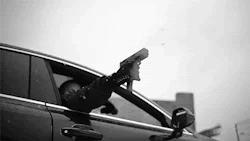Ghost guns slip by regulators
By SARAH OKESON
The federal agency that oversees guns is largely failing to monitor a technology that the extremist anti-government Boogaloo movement used to convert semiautomatic weapons to machine guns.
Officials from the Bureau of Alcohol, Tobacco, Firearms and Explosives could only come up with 12 cases in the last four years using 3D-printed guns.
The Transportation Security Administration found 3D-printed
firearms six times at its checkpoints in airports from January 2017 to July
2020, but 3D-printed firearms often can’t be detected by metal detectors.
“These low figures might not present a complete picture,” wrote
investigators for the Office of Inspector General at the Justice Department.
In March, federal prosecutors said that Timothy John Watson of
Ranson, W. Va., used 3D printing to make hundreds of devices to convert semiautomatic weapons to machine
guns. Watson sold the devices online to adherents of the Boogaloo movement and
described them as wall hangers to hold keys and other items.
Boogaloo followers say they are preparing for a second American
Civil War.
Watson’s customers included Steven Carrillo who is accused of ambushing three deputy sheriffs in California. One died. The device Carillo and others bought, a drop in auto sear, converts an AR-15 rifle into a machine gun. They are illegal.
In October, Judge Gina Groh sentenced Watson to five years in
prison after he pled guilty to possessing an unregistered firearm silencer.
Three other charges were dismissed.
Alphonso Hughes of the ATF wrote that the agency agrees that
more monitoring of 3D printed firearms is appropriate and that the ATF agreed
with the report’s recommendations.
“We are grateful for OIG’s thorough and thoughtful review of
this important topic,” Hughes wrote.
Federal auditors recommended that the agency consider changing
eTrace, its online system for police to submit information about guns recovered
in criminal investigations. Police can’t easily submit information about
whether guns are made by 3-D printing which means that the ATF can’t track
emerging trends about 3-D printed firearms.
Federal auditors also recommended that the ATF work with the firearms
industry to get information about 3-D printed firearms and work on evaluating
potential threats of specific 3-D printed firearms.
Sarah Okeson is correspondent for DCReport, reporting
on the environment, gun control and the COVID pandemic. She is a former staff
reporter for the Springfield News-Leader, Joplin Global and Florida Today ; and
her work has also been featured by Salon, Miami Herald, Washington Times,
Barons and more.
